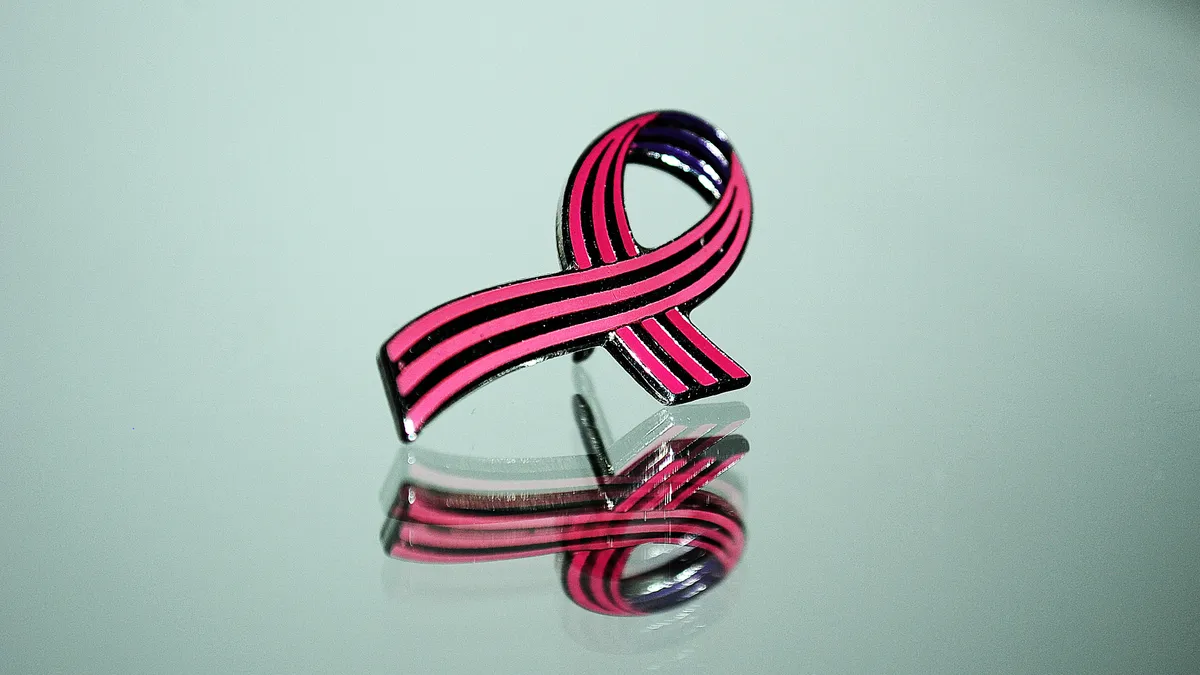Dive Brief:
-
FDA issued a proposed rule Wednesday aimed at improving "robust oversight" of mammography facilities. The agency is floating requiring providers to share breast density information in a letter with patients, a factor that can impact mammograms' readability and women's overall breast cancer risk.
-
Additionally, the rule would in certain cases empower FDA to directly notify patients and healthcare professionals of a mammography facility's quality violations, and that a reevaluation or a repeated screen may be needed.
-
If enacted, FDA noted the set of updates would be the first major regulatory changes since the Mammography Quality Standards Act went into effect in 1994, which gave the agency the authority to carry out facility inspections and enforce standards related to radiation dose, equipment and personnel. FDA said technological developments, like the first approval of a 3D mammography system in 2011, and more advanced understanding of breast anatomy and cancer risk factors prompted the amendments.
Dive Insight:
Dense breasts are hardly an anomaly; at least half of women have a high ratio of of fibroglandular tissue to fatty tissue. Dense breast tissue appears white on a mammogram, or series of low-dose X-ray images, which can make it difficult for a provider to distinguish tissue versus lumps, lesions or other early signs of breast cancer.
If women are aware of this nature, they may decide with a doctor to undergo supplemental imaging like MRI or ultrasound. Accordingly, more than 30 states between 2009 and 2018 established their own laws requiring some level of patient notification of breast density. A recent study backed by the American College of Radiology suggested women in states with these laws were more likely than women in states without requirements to have learned of their breast tissue type from a mammogram results letter (60% versus 48%) and more likely to discuss supplemental screening with a doctor (67% versus 53%).
FDA also wants to expand the range of mammogram classifications. Currently, mammograms can be labeled as negative, benign, probably benign, suspicious, highly suggestive of malignancy, or incomplete and in need of additional imaging evaluation. The rule states these categories "do not account for some important clinical and mammographic scenarios," with the agency proposing to add two final assessments ("known biopsy proven malignancy" and "post-procedure mammograms for marker placement") as well as another incomplete category ("need prior mammograms for comparison").
Another addition would require that facilities deliver medical reports to healthcare providers for patients whose summaries are classified as either suspicious or highly suggestive of malignancy within a specific timeframe, aiming for earlier definitive tissue diagnosis and start of treatment while minimizing patient anxiety.
Current mammogram guidelines from the American Cancer Society recommend women at average risk for breast cancer between the ages of 45 and 54 get a mammogram every year. That guideline shifts to every other year for ages 55 and older. The National Cancer Institute estimates 12.4% of women will be diagnosed with breast cancer in their lifetime.
The modernization effort was listed on the Fall 2018 Unified Agenda in 2018. There will be a 90-day comment period.
The update to mammography regulation could be one of outgoing FDA Commissioner Scott Gottlieb's final actions impacting radiological health. He has said his last day on the job will likely be April 5.












